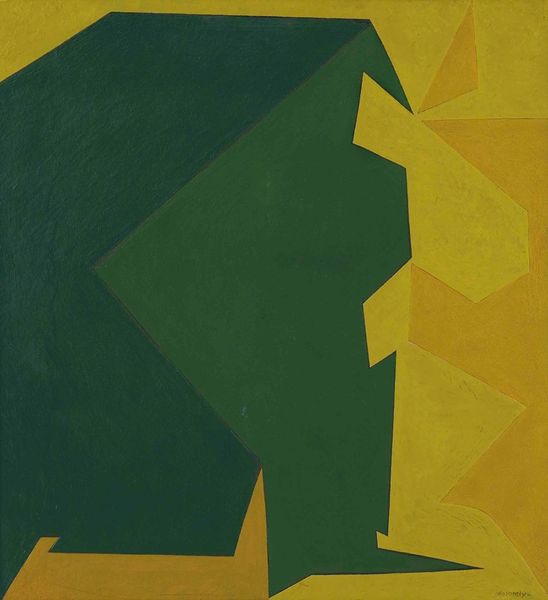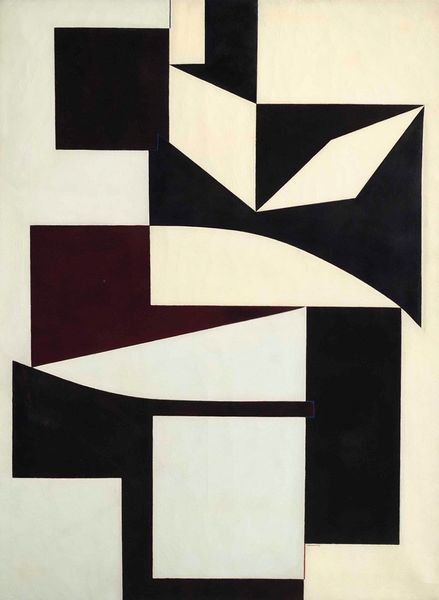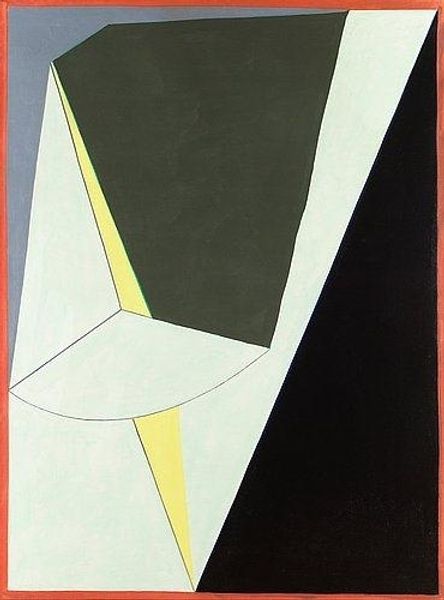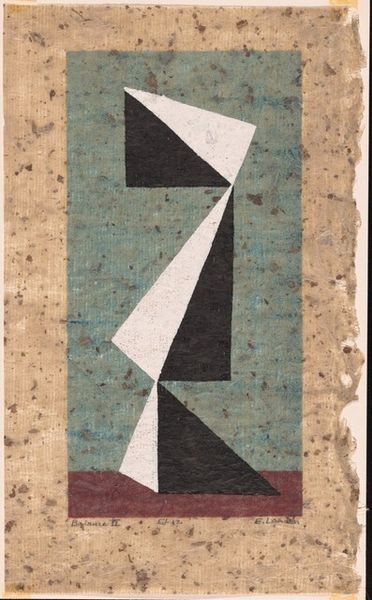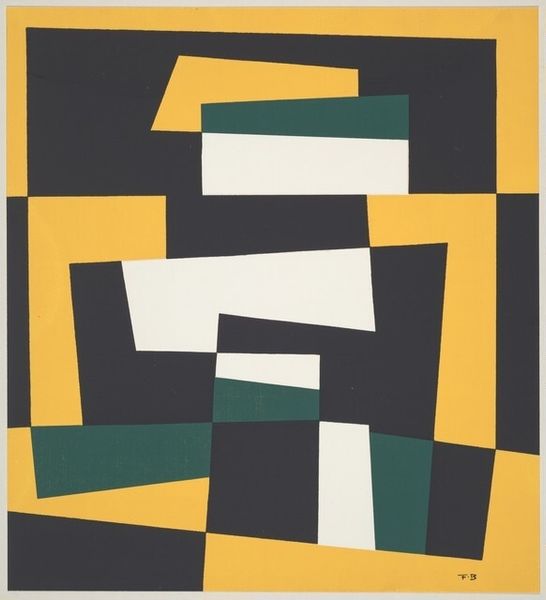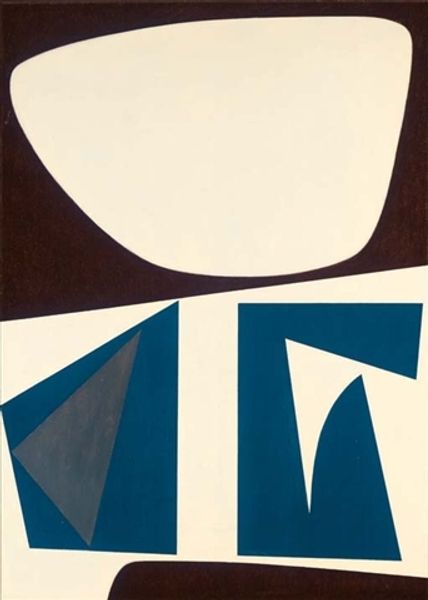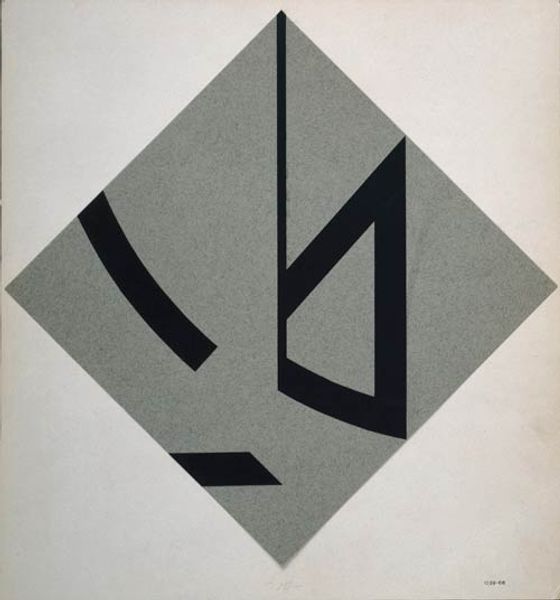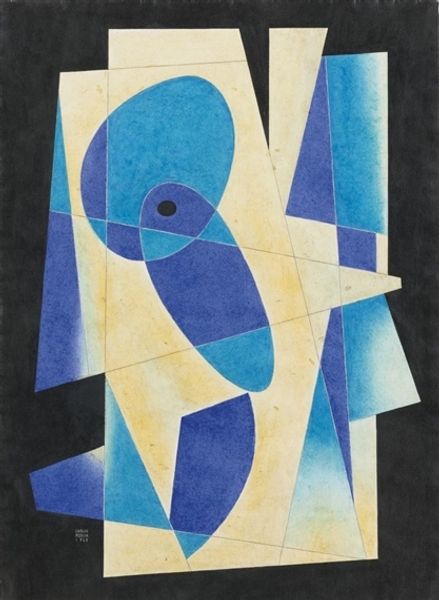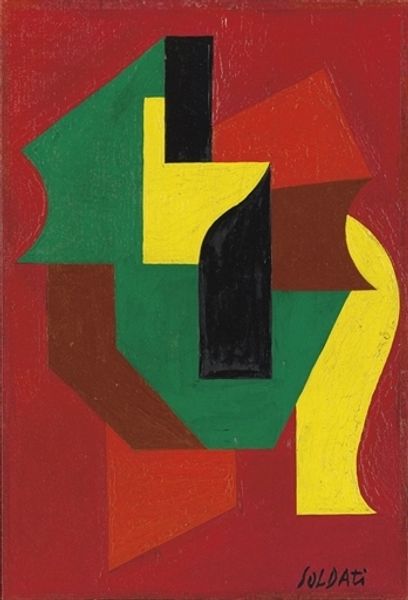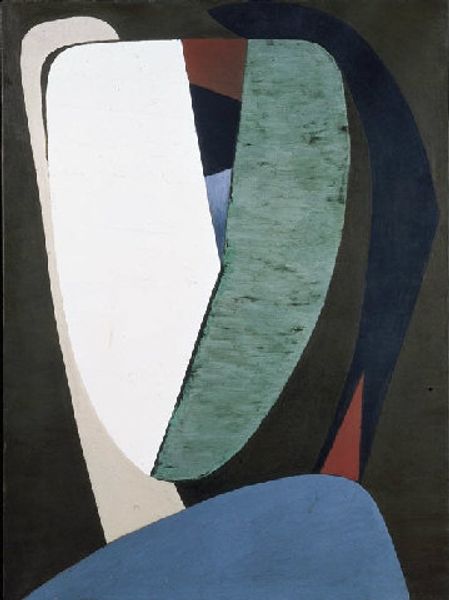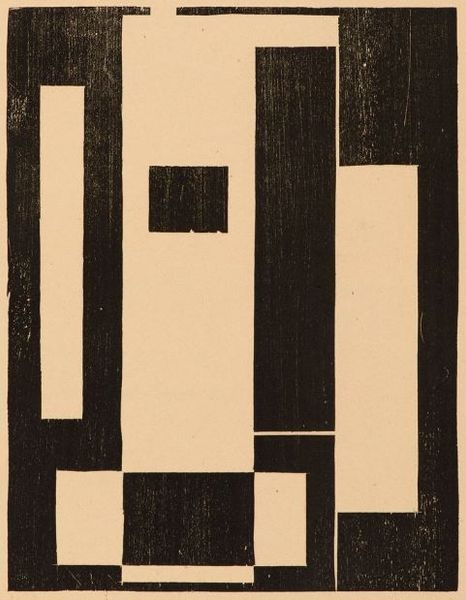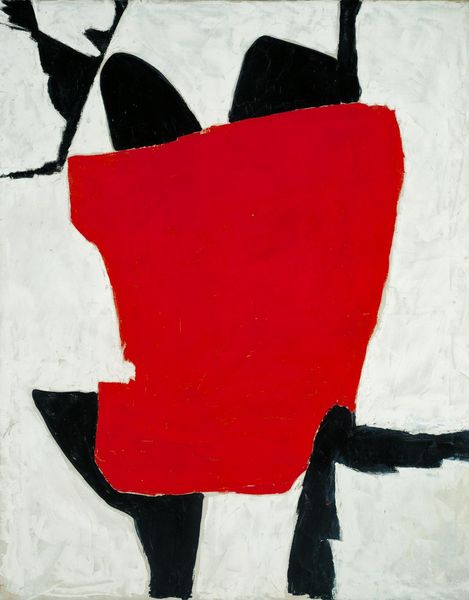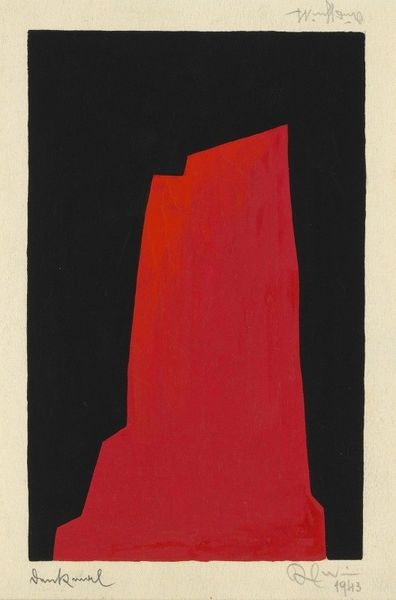
painting, acrylic-paint
#
neo-plasticism
#
non-objective-art
#
op-art
#
painting
#
pop art
#
acrylic-paint
#
abstract
#
form
#
geometric
#
geometric-abstraction
#
abstraction
#
line
#
modernism
Copyright: Modern Artists: Artvee
Editor: This is "Jarkand II," an acrylic painting by Victor Vasarely, dating from 1952 to 1953. Its hard lines and basic geometric shapes – all in a monochrome palette – lend it an undeniably bold character. What's your take on it? Curator: What strikes me first is the controlled tension, that electric hum created by opposing forms, each nudging and negating the space of the other. See how the large black mass descends, but it's simultaneously held, almost revered, by that smaller geometric structure. The green border adds a layer of depth to it, almost giving a trompe l'oeil effect to the otherwise non-objective artwork. Does it not strike you as a doorway? A beginning or end? Editor: That's interesting. I hadn't considered the sense of 'beginning and end.' I was mainly seeing clashing shapes, not quite melding, almost rebelling against their imposed boundary. Curator: Ah, yes! It's Vasarely playing with the eye, wouldn't you say? He presents an order, a supposed system, but nudges it ever so slightly to reveal the playful chaos beneath. Does it call to mind Neo-Plasticism? Editor: Absolutely, I can definitely see that now, reflecting the move away from easily discernible and naturalistic art forms, to basic geometric shapes, lines and forms! The almost aggressive contrast feels very characteristic. I appreciate you pointing out how the dynamism comes from a very strict control! Curator: Precisely. Restraint amplifying rebellion! I feel that so often in great art: the rules exist only to be delightfully bent. Editor: It does make you wonder where Vasarely would have gone with it.
Comments
No comments
Be the first to comment and join the conversation on the ultimate creative platform.
